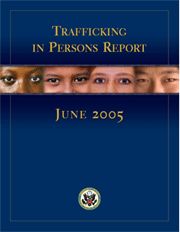
Victims of human trafficking can get help through the provisions of the Trafficking Protection Act of 2000. For a victim of get help, however, there is need for screening to certify that he or she is qualified under the Act. A person can become a victim of human trafficking as a result of fraud, force or coercion. Fraud could be promise of marriage, education, job or a better life. Coercion is a situation whereby a victim is threatened by the trafficker, for example, threat to hurt loved ones. Force could be as a result of rape, beatings, kidnap and so on. As a result of these three main ways in which a victim is identified as a human trafficking victim, victims are now able to get help.
Some of the help a victim could get according to the Health and Human Services Department are:
- Food: Victims can get food through food pantries; soup kitchens; faith-based food programs; supermarkets/restaurants/bakeries providing day-old, slightly damaged, or leftover food items to charitable organizations
- Shelter: Victims can get short to temporary long term shelter at domestic violence/women’s shelters; runaway and homeless youth shelters; transitional housing programs; shelters for undocumented immigrants (usually for men); and
faith-based housing programs, such as the Catholic Worker Movement that provides housing opportunities in many U.S. communities http://www.catholicworker.org/communities/commlistall.cfm). - Some faith-based organizations donate rent money or identify church members who can offer temporary housing;
temporary shelter in seminaries, convents, or school dorms; State foster care for eligible children. - State or local housing and community development agencies can also provide lists of affordable housing projects and identify non-profit organizations that manage affordable housing.
- Clothing and Goods: Victims can get clothing or household goods from local chapters of national organizations providing clothing and goods such as Goodwill, Salvation Army, St. Vincent de Paul, AMVETS Thrift Stores. Many nonprofits operating thrift stores offer free clothing giveaways; professional clothing donation services, such as local Dress for Success® affiliates
(http://www.dressforsuccess.org/dfs_affiliates.aspx) or The Women’s Alliance (http://www.thewomensalliance.org/); similar locally operated programs can be found through Internet search engines; some churches, schools, and hospitals
operate clothing drives/clothing banks; refugee resettlement agencies provide donated goods; yard sales are excellent sources for inexpensive used clothing and household goods; many department stores give away damaged and out-of-season
clothing to charitable organizations; community dry cleaners may operate clothing donation drop-off sites; hotels may donate old furniture when renovating or they may be willing to provide shampoo and other toiletries; sexual assault crisis center clothing collections; churches, businesses, and civic organizations may be willing to donate gift cards for grocery stores or
discount department stores. - Medical: Victims can get medical help through community health centers; migrant health clinics; city clinics; homeless clinics; free clinics at universities or in communities; health fairs at community hospitals (for preventive services); county mental health clinics; health programs operated out of NGOs; substance abuse services; maternal and child health
programs; parenting classes. - Legal: Free/pro bono legal services are provided for victims at Legal aid clinics/agencies/foundations; law school clinics; law firms; employment law centers; community-based legal providers, such as those serving particular ethnic communities; immigration rights clinics; nonprofit organizations providing legal assistance to immigrants; faith-based immigration relief
organizations, such as the Catholic Legal Immigrant Network, Inc. (CLINIC), which provides support services to diocesan and other affiliated immigration programs, with field offices in 48 States. - Job Training Programs: In order to move on into a career choice, victims can get job training through local affiliates of Goodwill Industries offer job training programs (http://www.goodwill.org/goodwill-for-you/jobs-and-careers/); CareerOneStop (http://www.careeronestop.org/) lists local contacts for apprenticeships and employment assistance; vocational training and job placement assistance are offered by community colleges and immigrant or refugee assistance organizations.
- Education Services: Victims can get access to education through GED assistance and general educational assistance programs at local adult education centers; immigrant community organizations; city/neighborhood community
centers; ESL (English as a second language) classes held at churches, schools, libraries, community colleges; translation/interpreting services (written/live language assistance; native tongue literacy). - Transportation: Clients enrolled in education programs can sometimes qualify for lower fares for public transportation, such
as the subway, bus, or train, with a student ID; voluntary driver programs (often operated out of churches); car and bike donation programs. - Crime Victim Compensation: Clients can usually apply at the city or county levels; funds can be used to pay for many of the above services, including relocation costs for safety reasons.
- Other Assistance: Battered immigrant women’s programs; sexual assault coalitions; rape crisis centers; ethnic
community organizations; faith-based organizations are available to victims of human trafficking.
Learn more about the benefits open to victims of human trafficking at http://www.acf.hhs.gov/trafficking/Trafficking_Svcs_9_30_11.pdf
Check a listing of CLINIC members at http://cliniclegal.org/ and click on the
icon “Public Directory Clinic Members”
